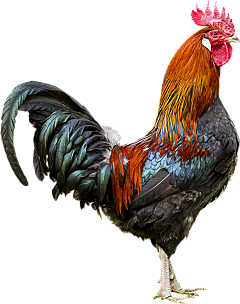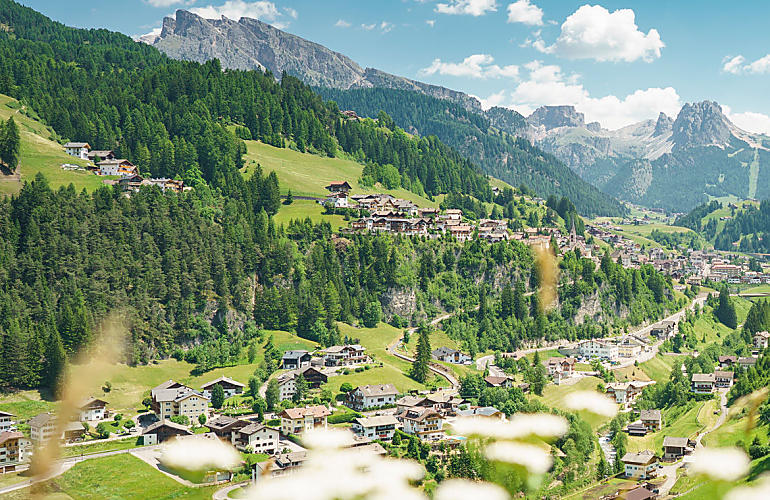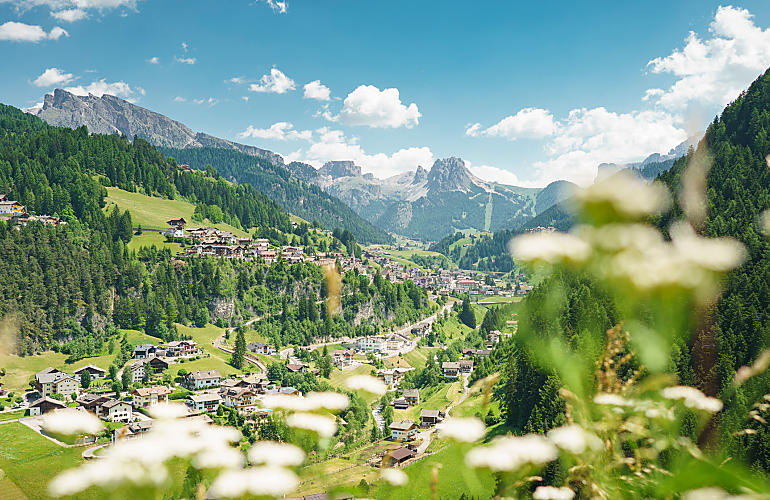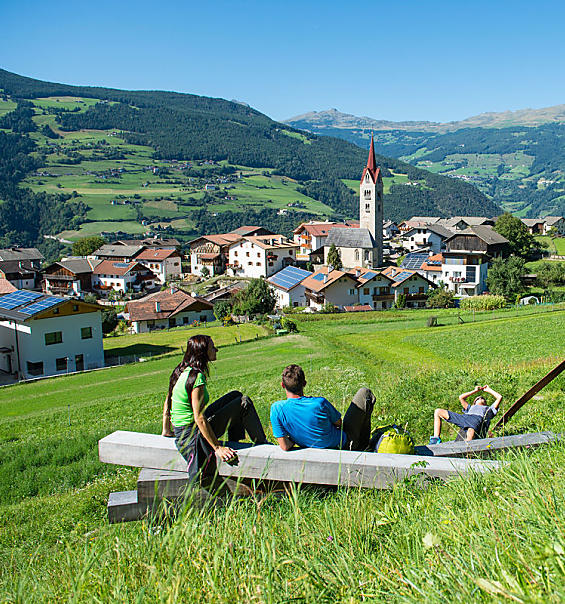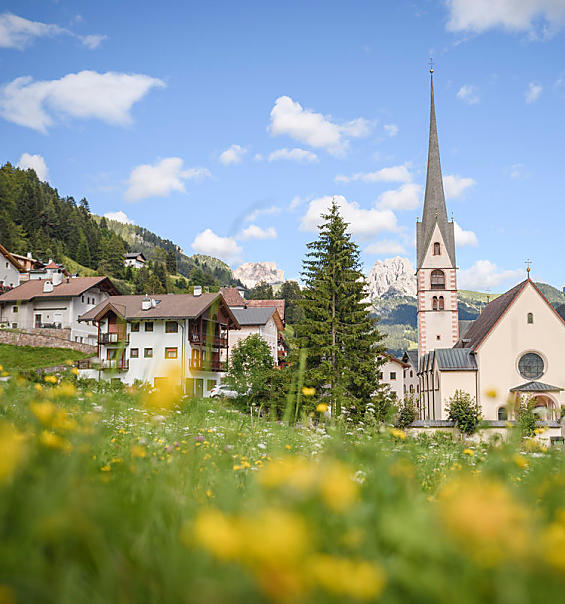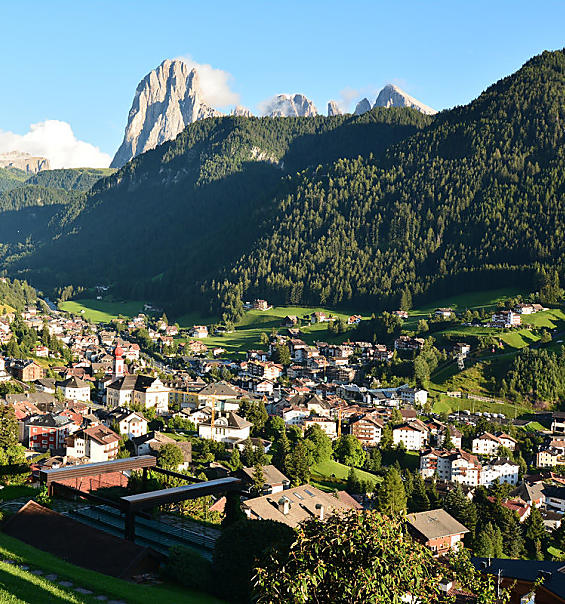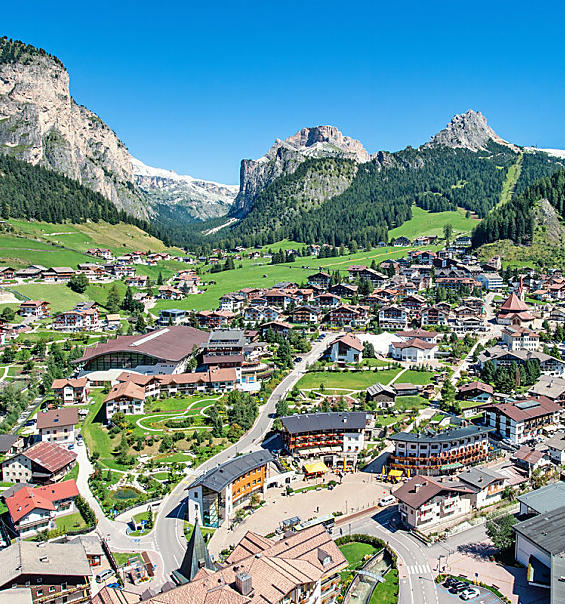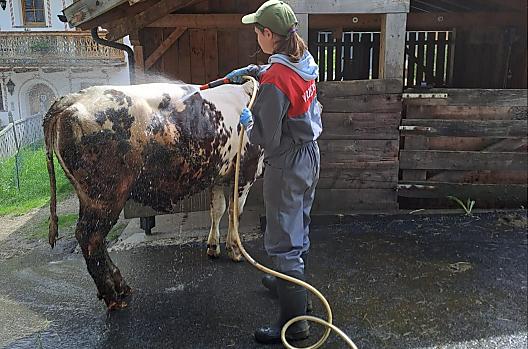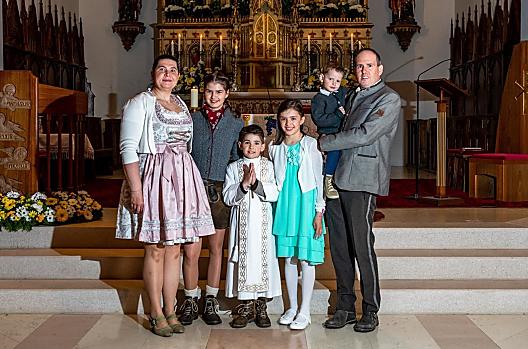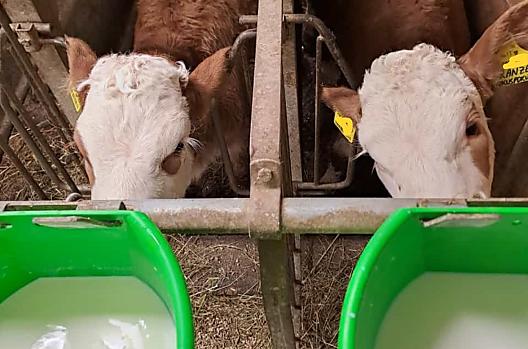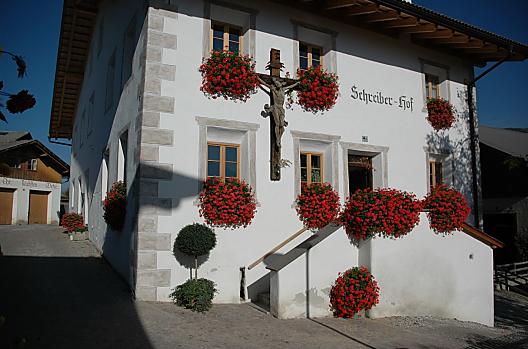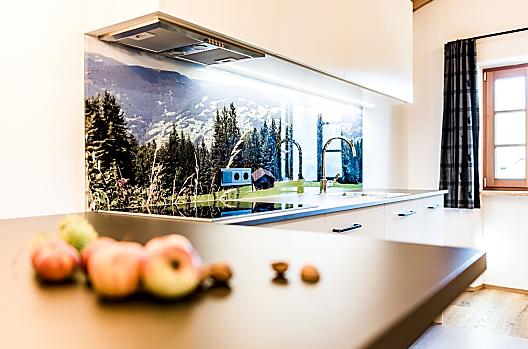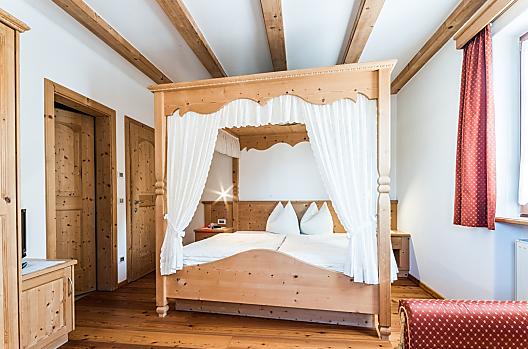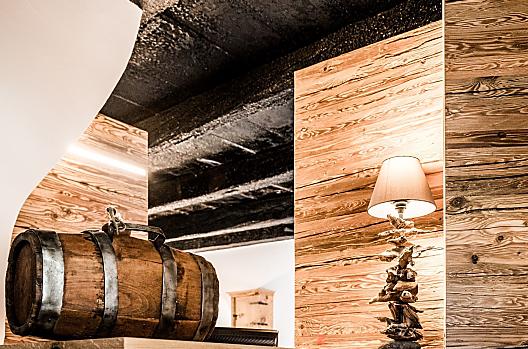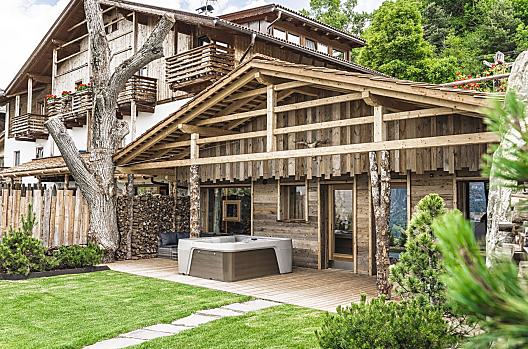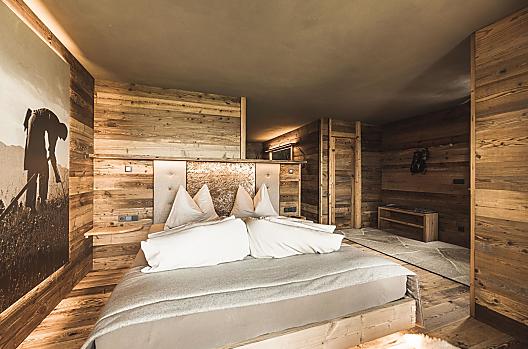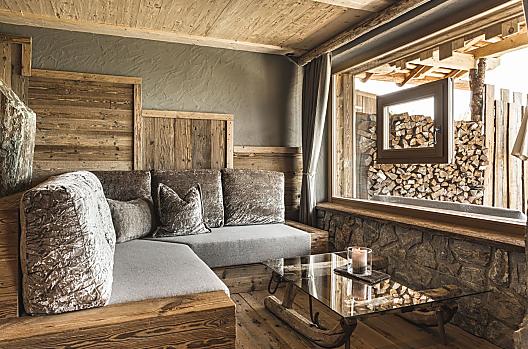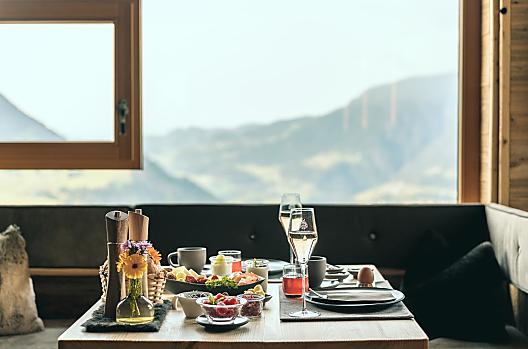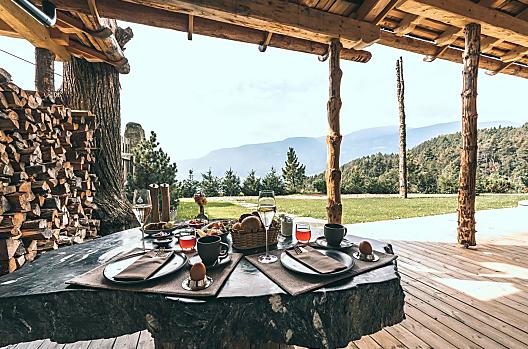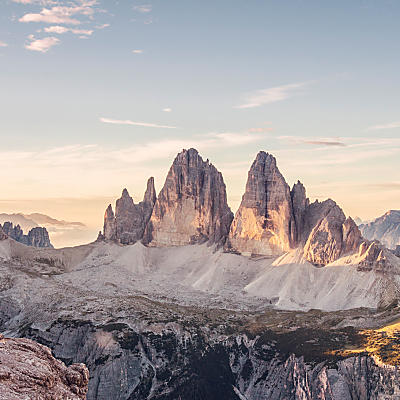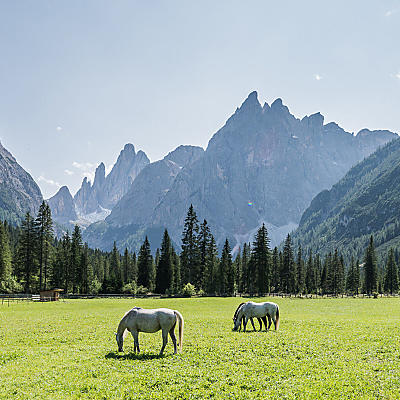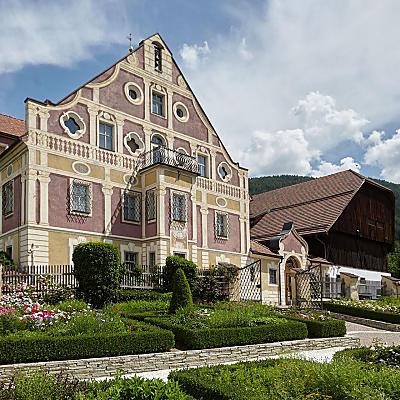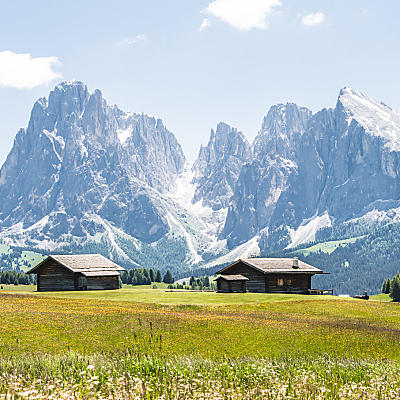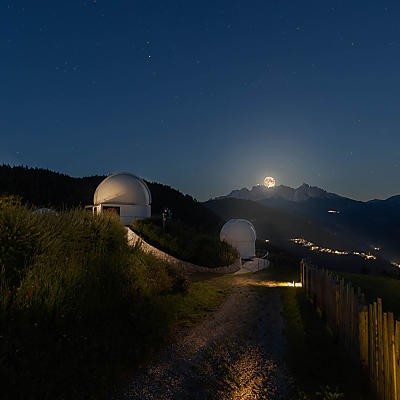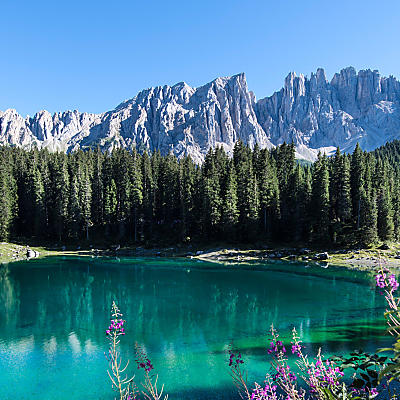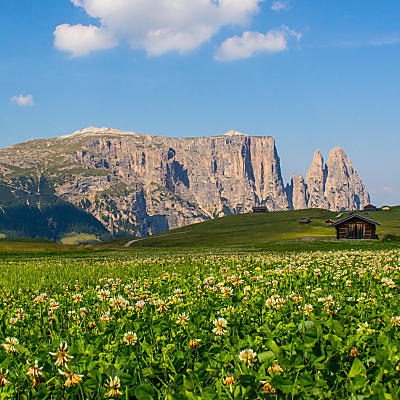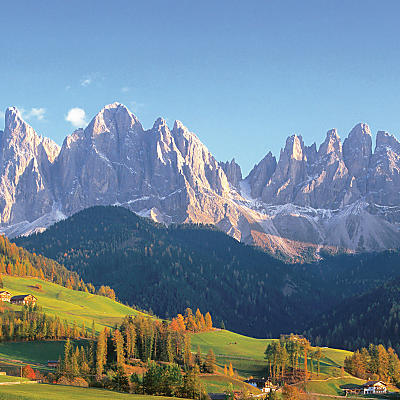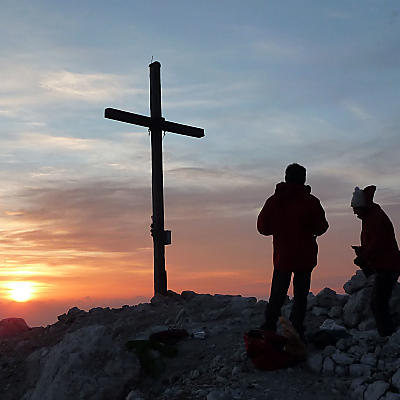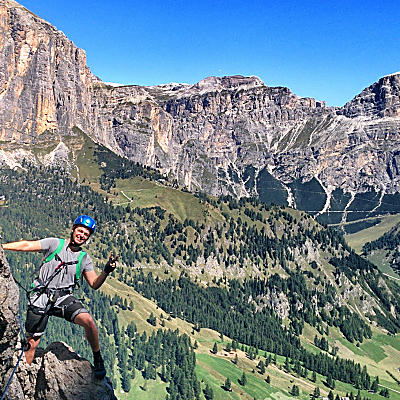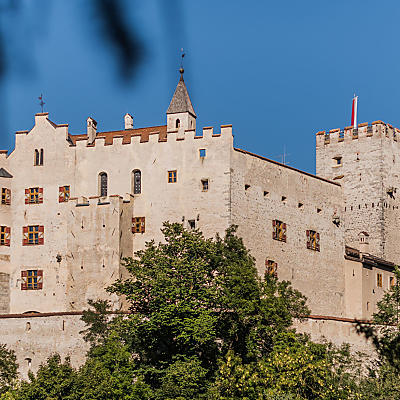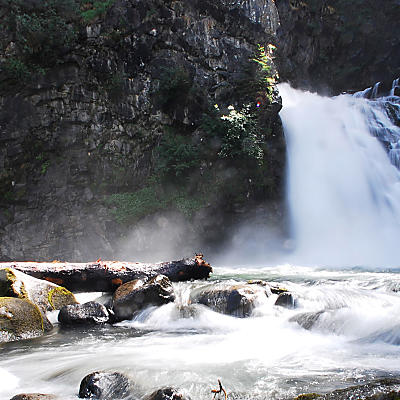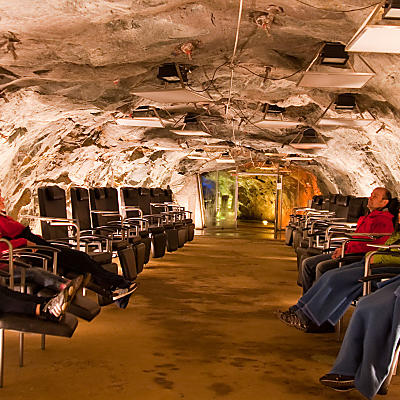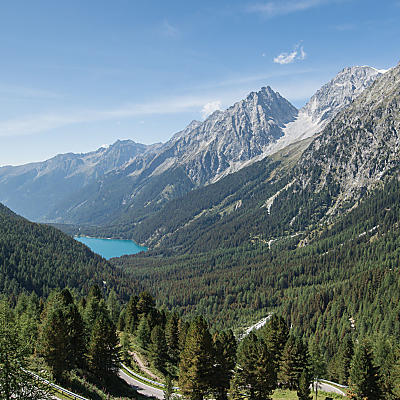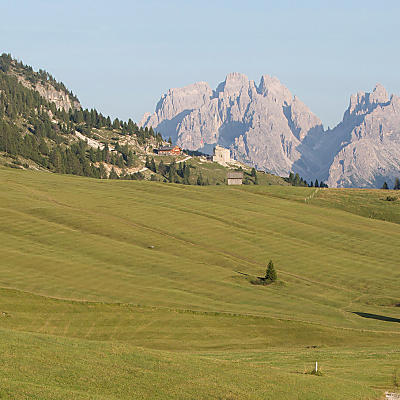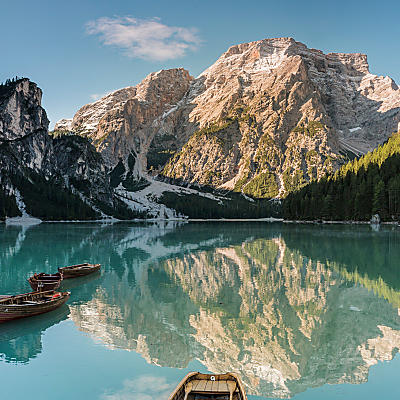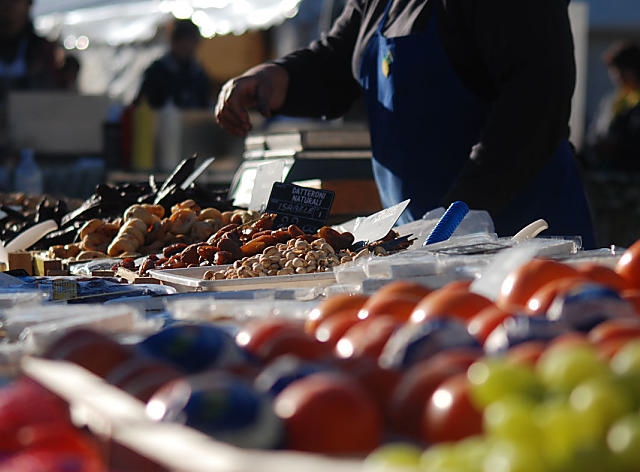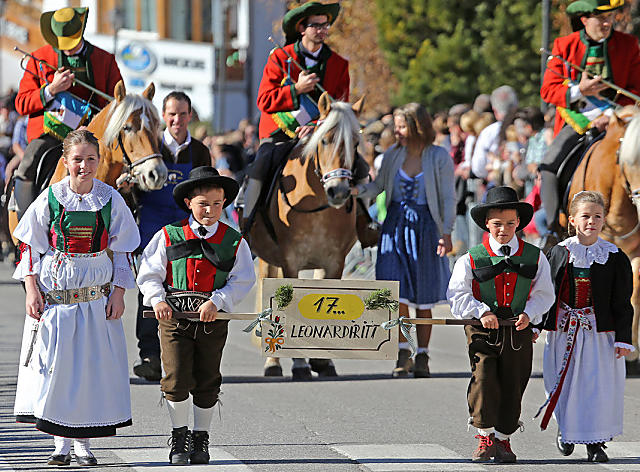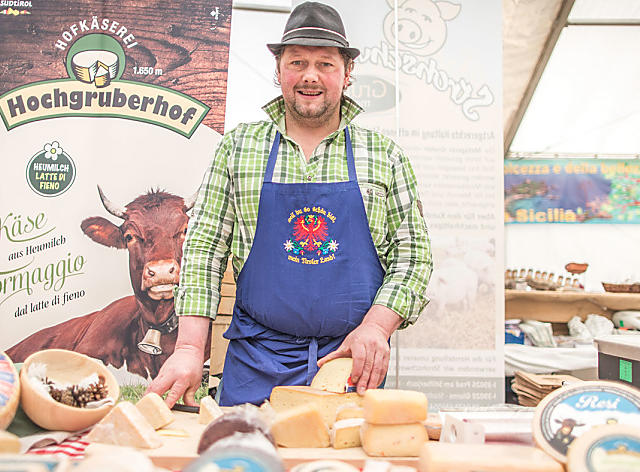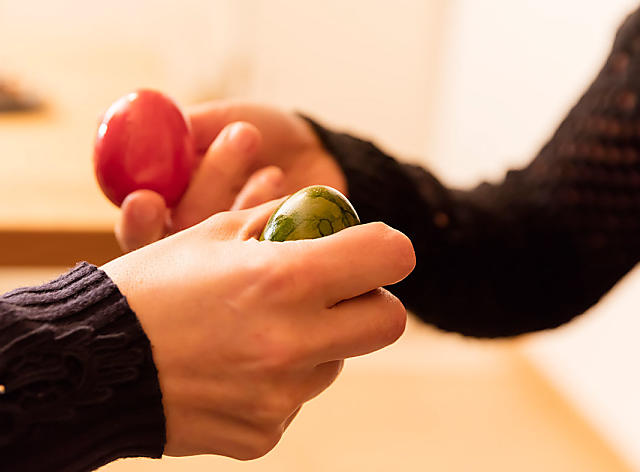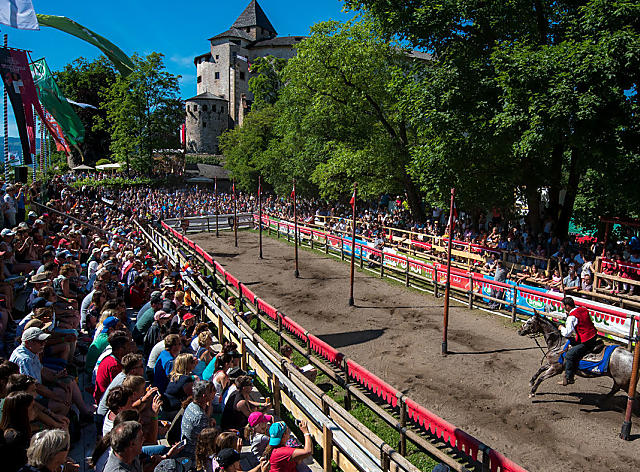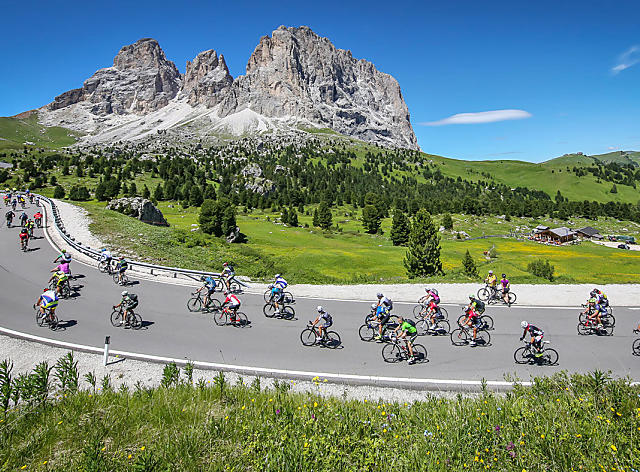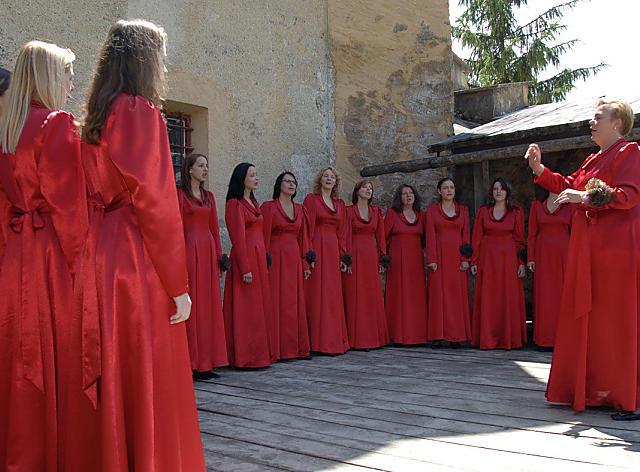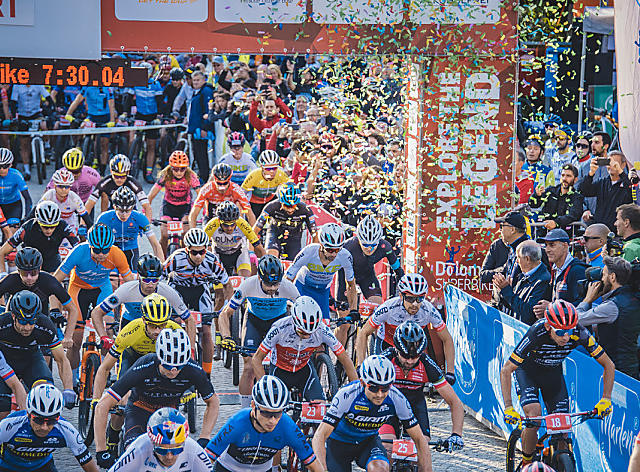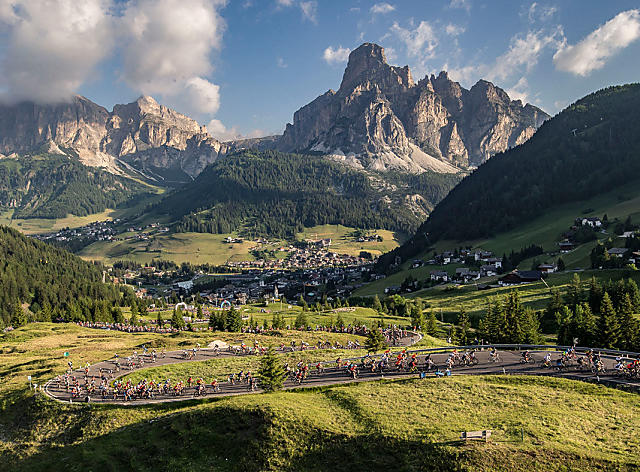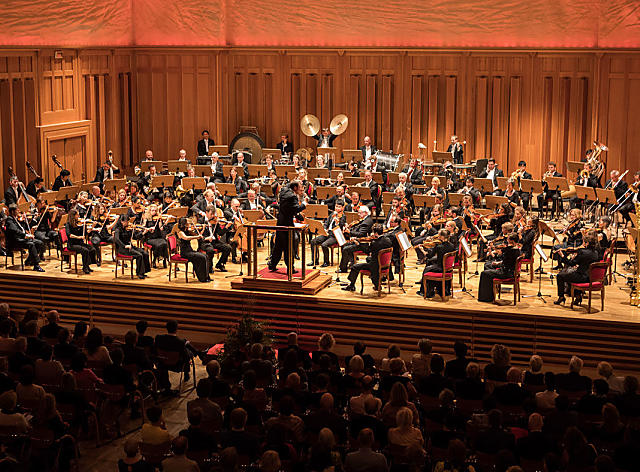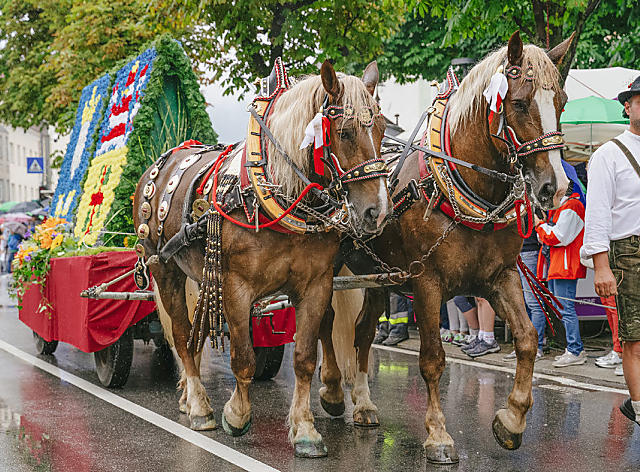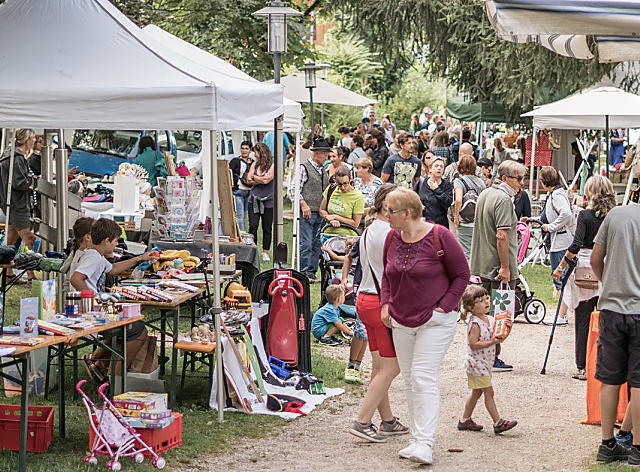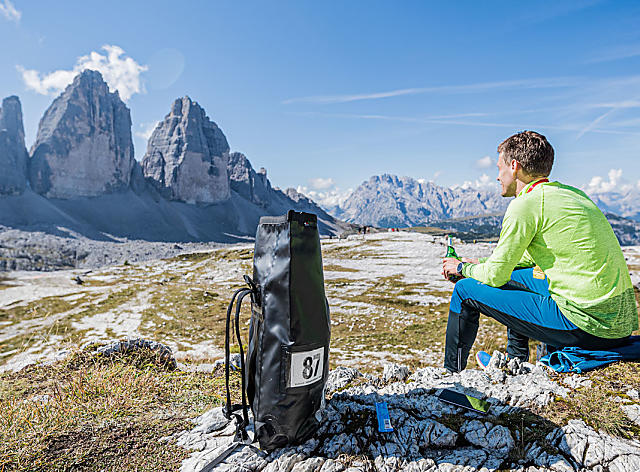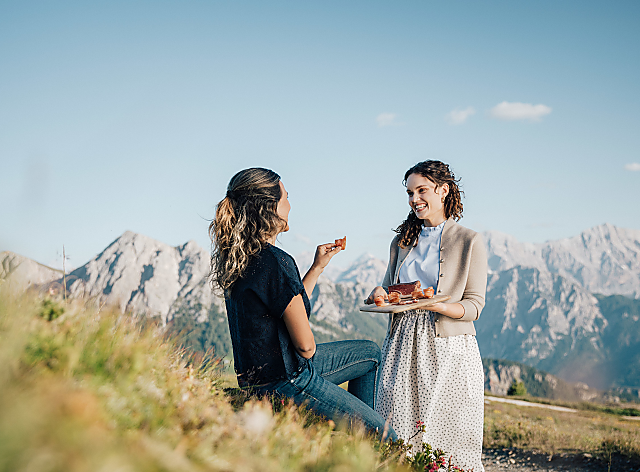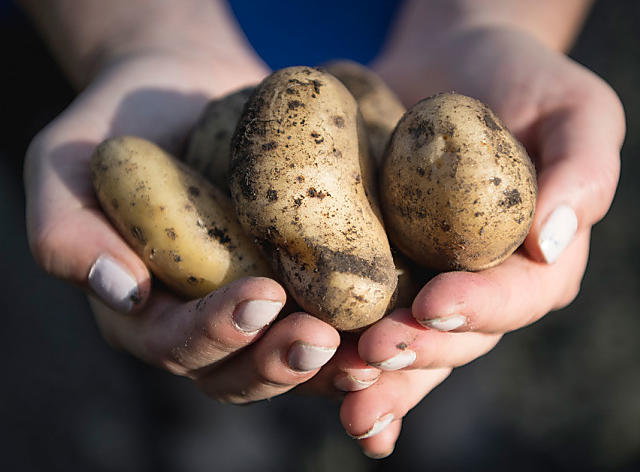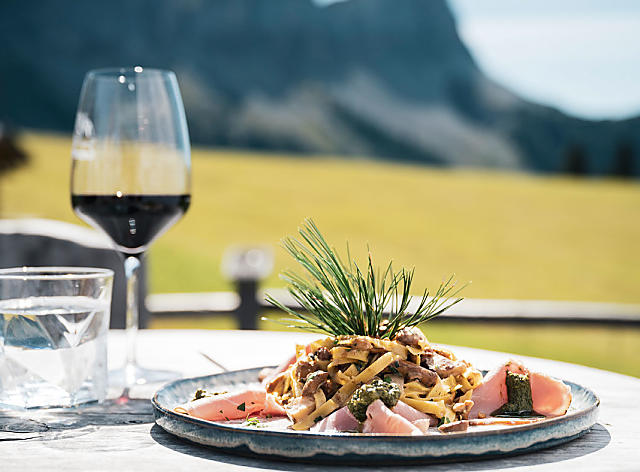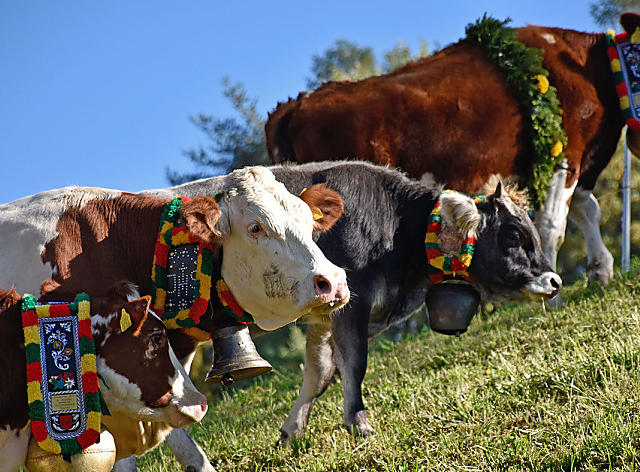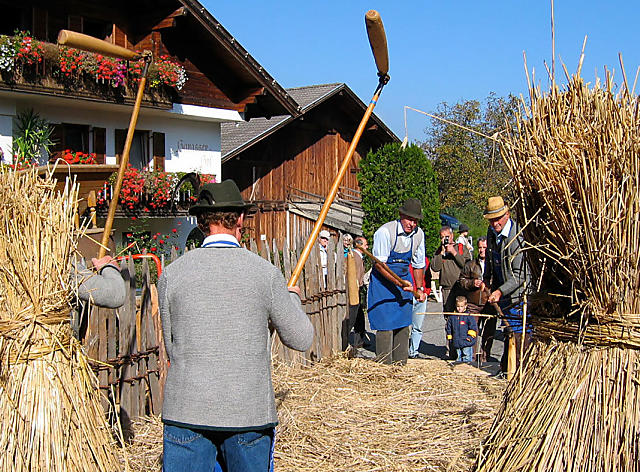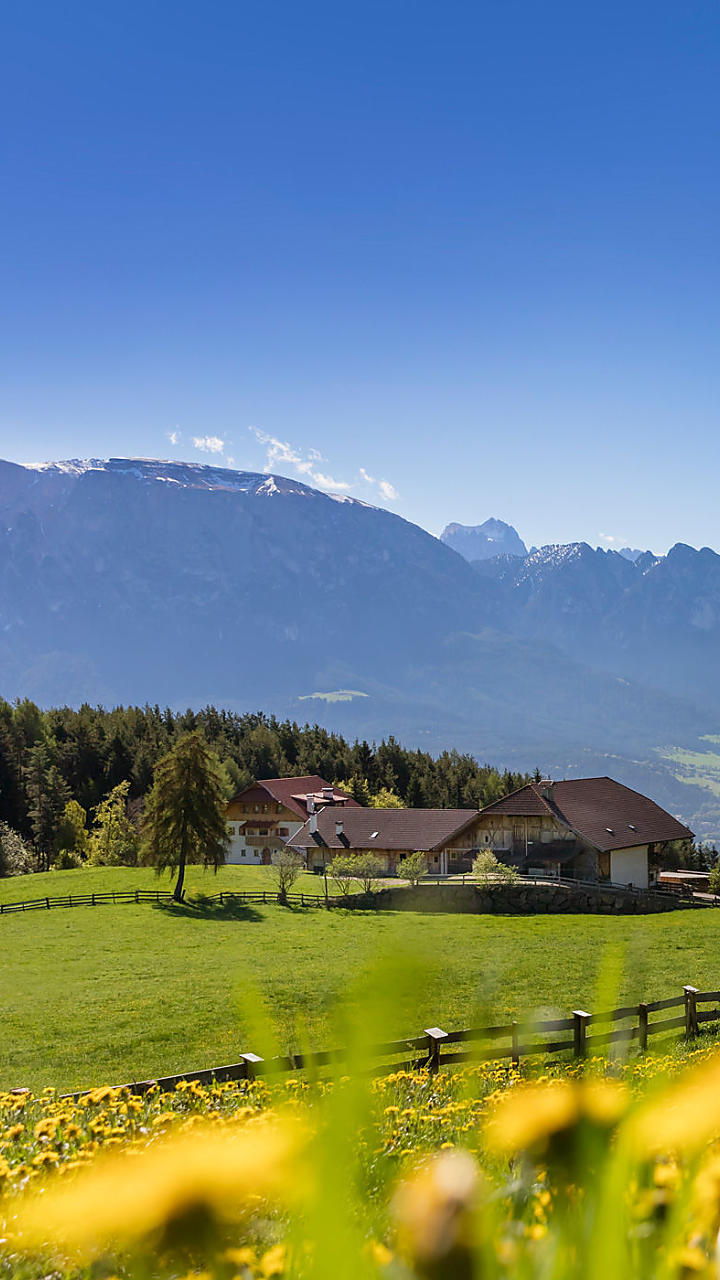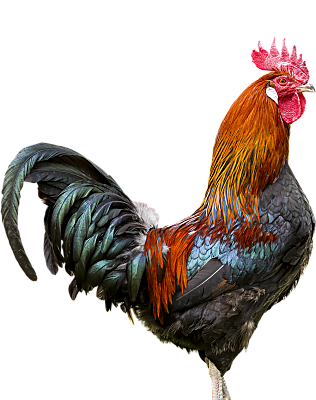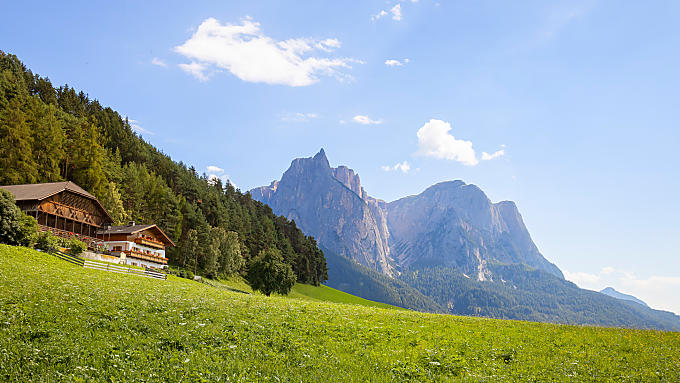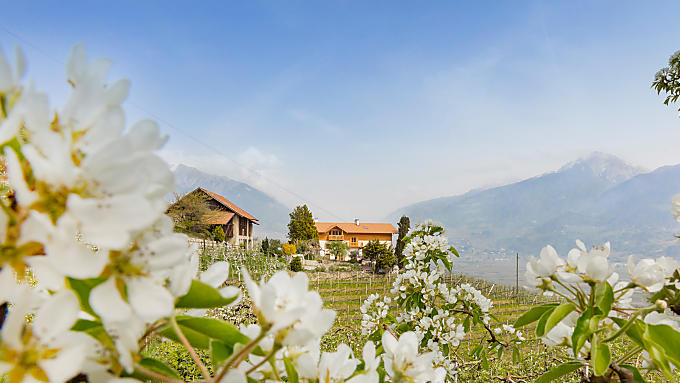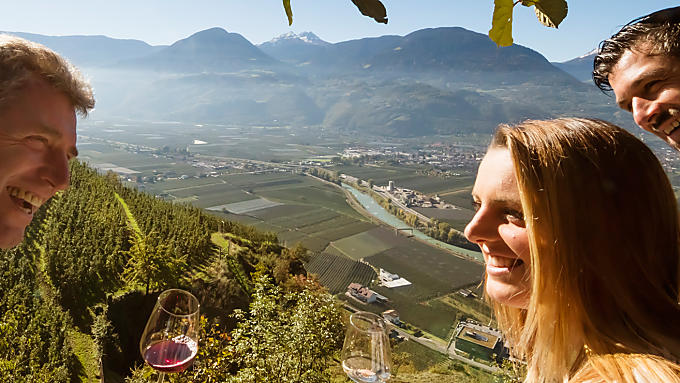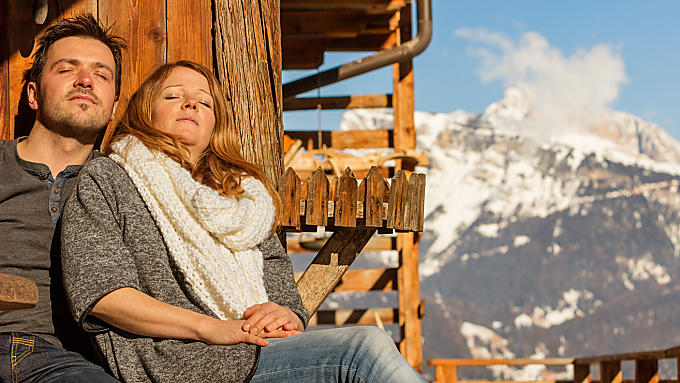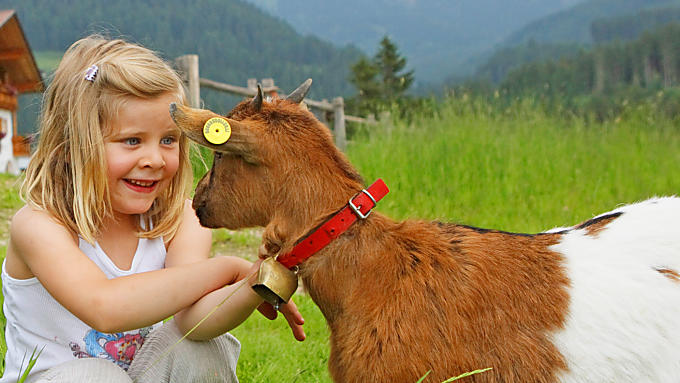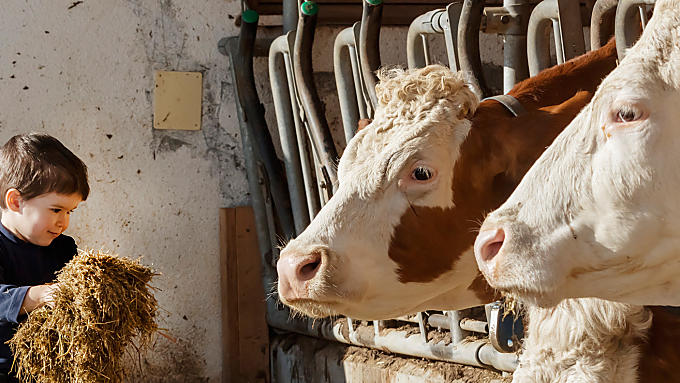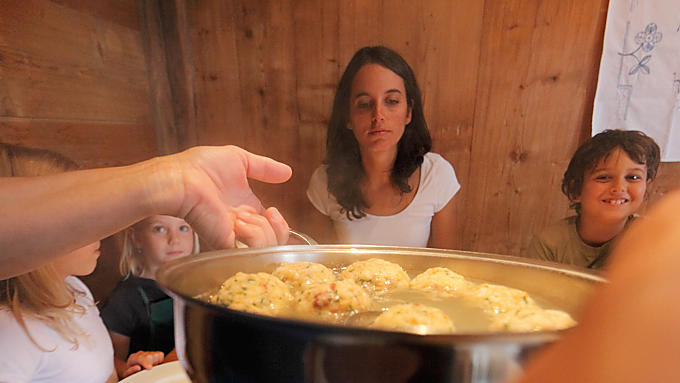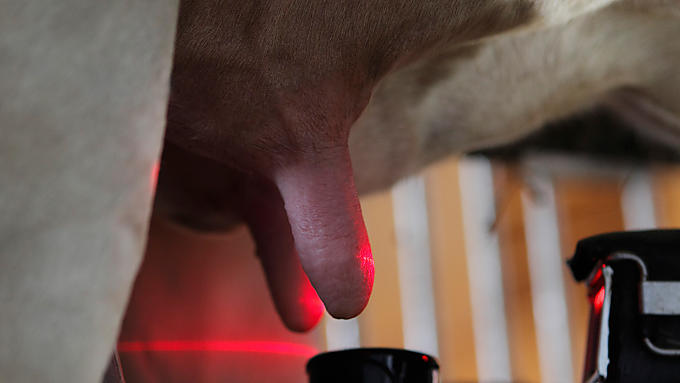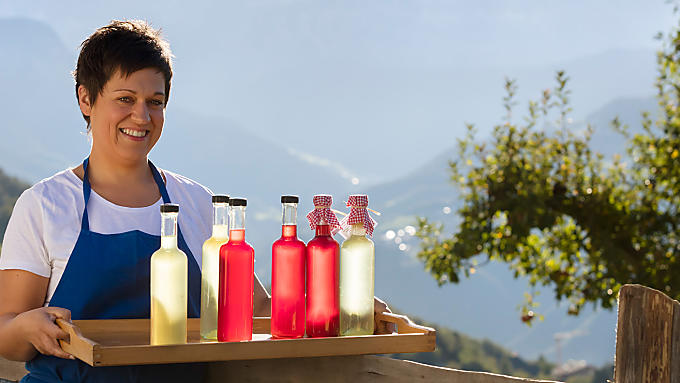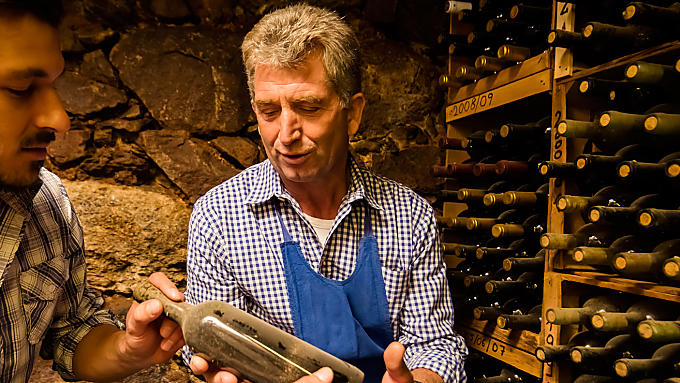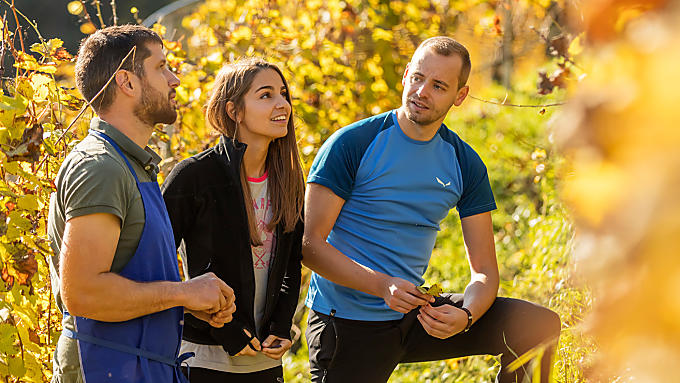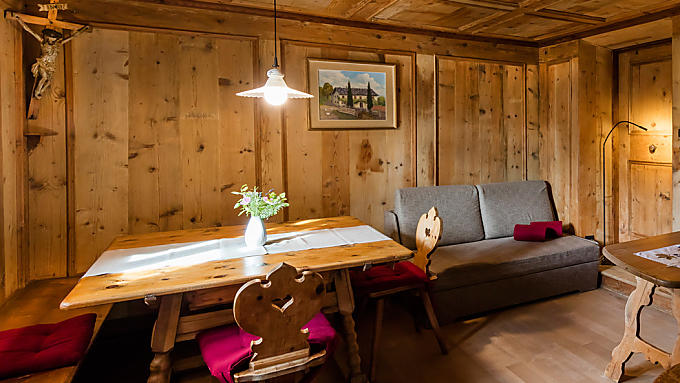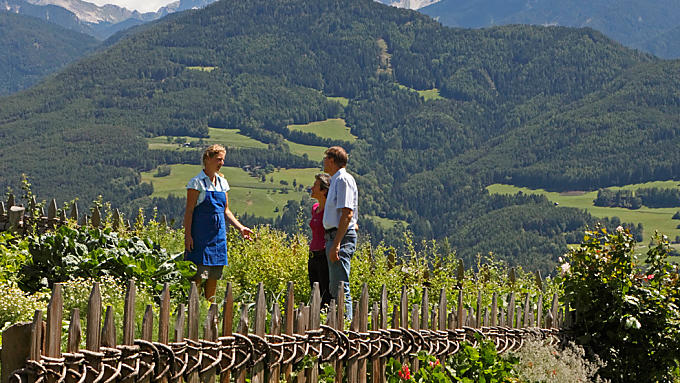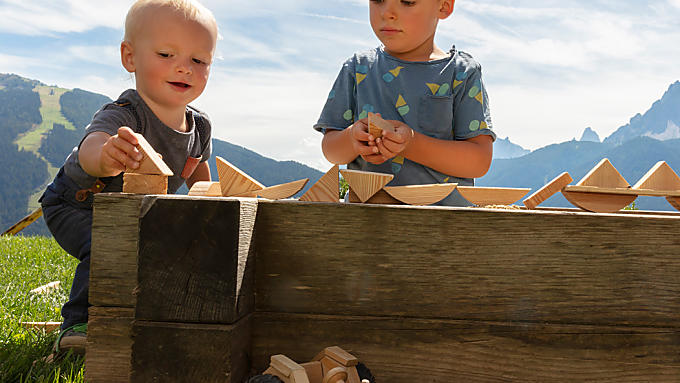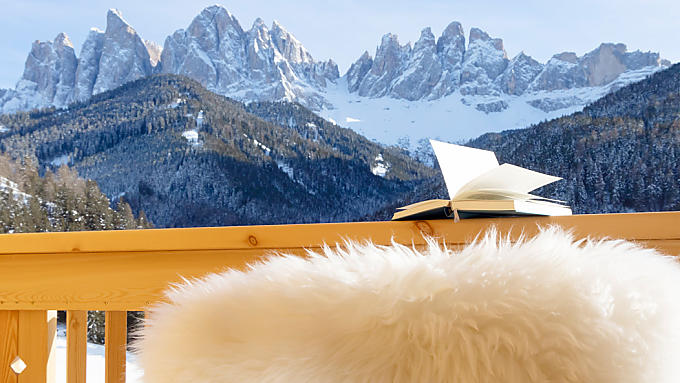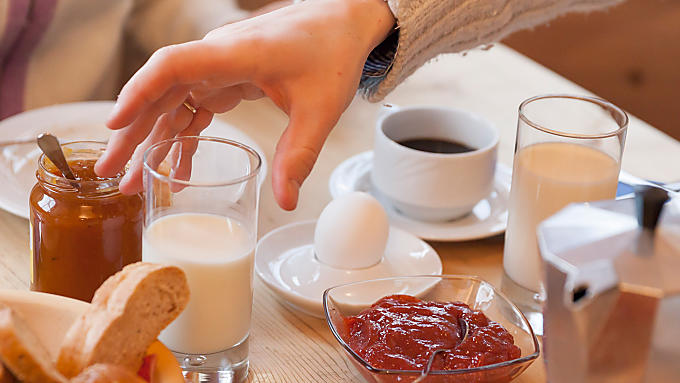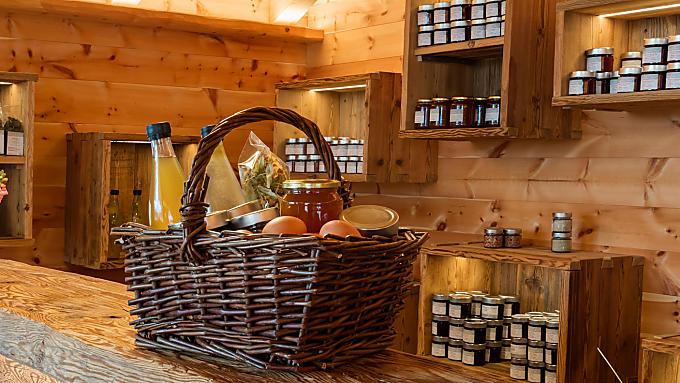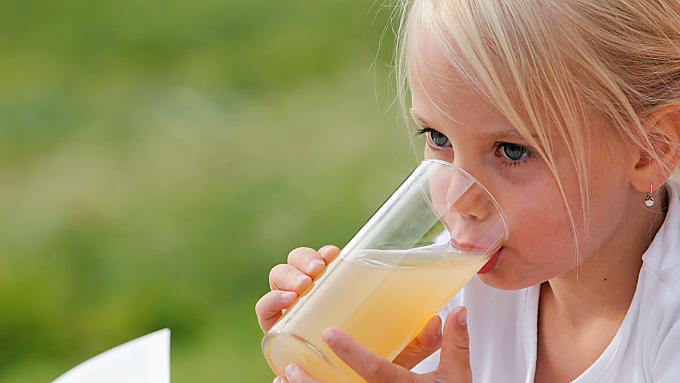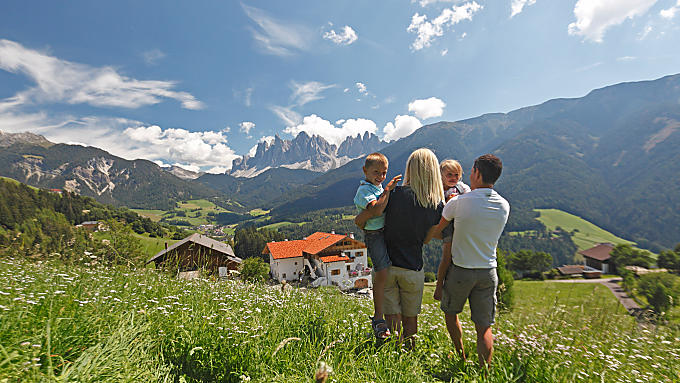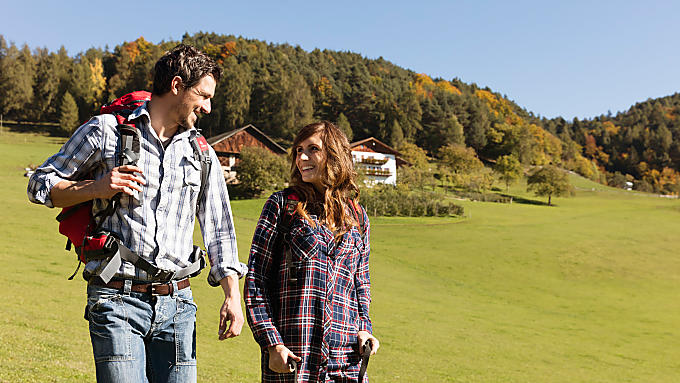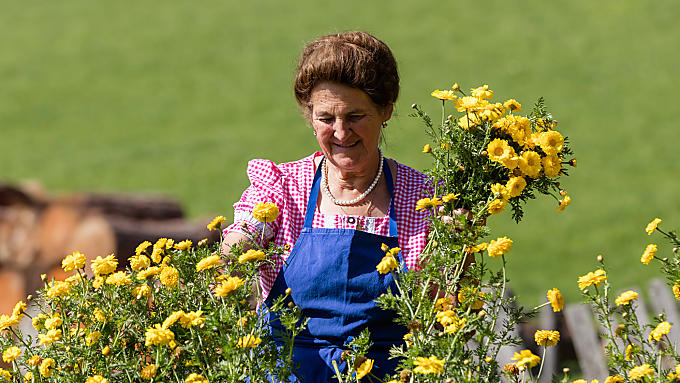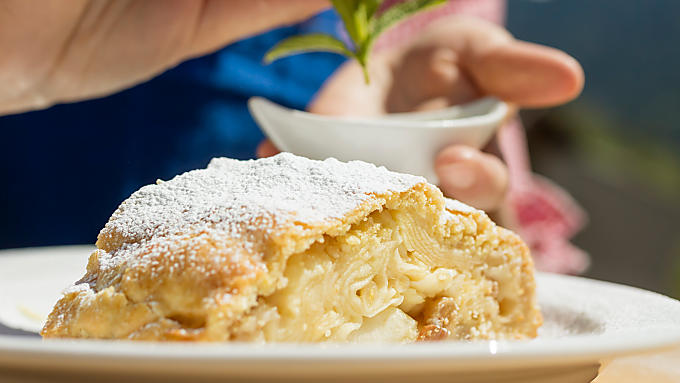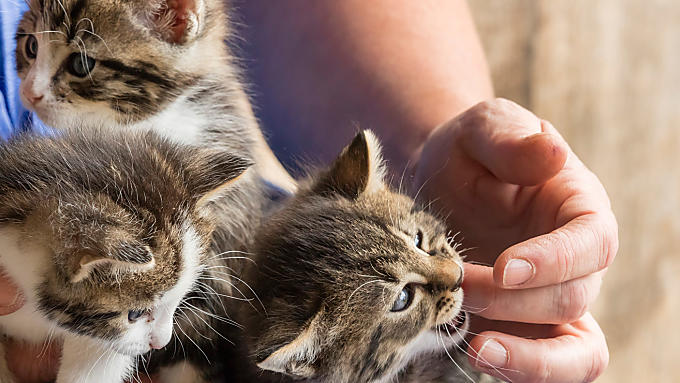A place of adventure
Farm Holidays in Gröden valley
Farm Holidays in Gröden are dominated by the peaks of the Dolomites, the Ladin language and traditional culinary specialities.
The valley of Gröden is situated at the heart of the Dolomites between the mountain peaks of the Geisler, Puez Group, Sella massif, Langkofel massif and Seiser Alm high plateau. One of the special features of the valley is the unique language that is spoken here – Ladin.
Farm Holidays in Gröden are dominated by the peaks of the Dolomites, the Ladin language and traditional culinary specialities.
The valley of Gröden is situated at the heart of the Dolomites between the mountain peaks of the Geisler, Puez Group, Sella massif, Langkofel massif and Seiser Alm high plateau. One of the special features of the valley is the unique language that is spoken here – Ladin.
Just under 30,000 people make up this linguistic minority and large part of the them live in Gröden. This 2,000-year-old Raeto-Romanic language with Celtic and Latin roots sounds like a mixture of Latin, Italian and German to today's ears. “Bënunì te Gherdëina“ means “Welcome to Gröden valley!“.
Where three languages are spoken
Booking a holiday flat or room in Gröden does not mean having difficulties making yourself understood, however. The Ladin people are extremely flexible when it comes to languages. They learn German and Italian at school and some subjects are taught in the Ladin language, which is why they are able to switch between the three languages so effortlessly. Nonetheless, their native tongue emerges again and again and Ladin may be seen wherever you go: farmhouses, roads, mountains and valleys often have old Ladin names.
Carved from wood
Gröden valley is not only known for its beautiful language. Visitors very much appreciate the local woodcarving, mountains and cuisine. Woodcarving, in particular, can look back on a long tradition going back to the 17th century. Like in other forested area, Ladin farmers used to pass the time during the cold winter months carving out wooden figures. This hobby gradually developed into a real craft and then a branch of art: nowadays, lots of artists make a living from carving wood in the three main villages of the valley, St. Ulrich, St. Christina and Wolkenstein. A large collection of woodcarvings from the 17th to 20th centuries may be admired in the museum of Gröden in St. Ulrich. In addition, old wooden toys, fossils and minerals from the Dolomites, archaeological finds from the valley and works by the Gröden artist Josef Moroder Lusenberg are on display. Not quite so old, but still a real attraction at the museum, are some personal effects belonging to the estate of the Gröden film director Luis Trenker.Anyone interested in sacred art will be impressed by the wooden sculptures by local artists found in the churches. The church of St.Jakob in St. Ulrich is particularly recommended. The largest nativity scene in the world may be found in St. Christina, likewise carved out of wood.
Buckwheat cake and 'Tirtlan' pastries
A foray into the local cuisine is part and parcel of a Farm Holiday in Gröden valley. Of course, hamburgers, chips and chicken wings are available too, but every menu contains local specialities, often interpreted in unexpectedly new ways. As the climate in the Dolomites only allowed growing of crops which didn't need much warmth and which were unaffected by sharp changes in temperature, mainly grains such as barley, wheat, rye and oats, as well as pulses and vegetables were cultivated. Buckwheat enjoys a special tradition. Known as 'Schworzplent' in South Tyrol, it may be made into a particularly delicious cake. Lots of 'Knödel' dumplings, gnocchi, 'Tirtlan' ravioli filled with spinach, curd cheese, sauerkraut or poppy seed, goulash and 'Greastl' – a hearty combination of spicy roast potatoes and meat – are dished up, too. Farms in Gröden valley offer cookery courses between June and November for fans of South Tyrolean and Gröden cooking, too.
Plenty of mountains, too
The convenience of a holiday flat or room in Gröden valley should also be used to take a day or two's worth of exploring the mountains. Those familiar with rope and hook will have the Sella massif or Langkofel mountains right in front of them. For those not keen on vertical rockfaces and stony terrain, there are countless well-marked hiking paths. The path along the former track of the Gröden valley railway track, for example, is especially suitable for children. This track was laid in 1915 by Russian prisoners of war and served as a reliable link between Klausen and Wolkenstein until 1960. A walk to the ruins of Wolkenstein castle is also well worth it.The valley leads to one of the most important and prominent ski resorts in the Alps in winter: 200 kilometres of piste may be found on the slopes beneath the Dolomites and there is a sophisticated network of lifts going up to the famous Sellaronda ski carousel, allowing skiers to do a seamless circuit of the whole Sella massif. Whether in winter or in summer, Gröden valley is always worth the trip.
Why you should take a Farm Holiday in Gröden valley:
- For hikers, climbers, cyclists, skiers and snowboarders
- One valley, three languages: Ladin, German and Italian
- Traditional and modern woodcarving
Just under 30,000 people make up this linguistic minority and large part of the them live in Gröden. This 2,000-year-old Raeto-Romanic language with Celtic and Latin roots sounds like a mixture of Latin, Italian and German to today's ears. “Bënunì te Gherdëina“ means “Welcome to Gröden valley!“.
Where three languages are spoken
Booking a holiday flat or room in Gröden does not mean having difficulties making yourself understood, however. The Ladin people are extremely flexible when it comes to languages. They learn German and Italian at school and some subjects are taught in the Ladin language, which is why they are able to switch between the three languages so effortlessly. Nonetheless, their native tongue emerges again and again and Ladin may be seen wherever you go: farmhouses, roads, mountains and valleys often have old Ladin names.
Carved from wood
Gröden valley is not only known for its beautiful language. Visitors very much appreciate the local woodcarving, mountains and cuisine. Woodcarving, in particular, can look back on a long tradition going back to the 17th century. Like in other forested area, Ladin farmers used to pass the time during the cold winter months carving out wooden figures. This hobby gradually developed into a real craft and then a branch of art: nowadays, lots of artists make a living from carving wood in the three main villages of the valley, St. Ulrich, St. Christina and Wolkenstein. A large collection of woodcarvings from the 17th to 20th centuries may be admired in the museum of Gröden in St. Ulrich. In addition, old wooden toys, fossils and minerals from the Dolomites, archaeological finds from the valley and works by the Gröden artist Josef Moroder Lusenberg are on display. Not quite so old, but still a real attraction at the museum, are some personal effects belonging to the estate of the Gröden film director Luis Trenker.Anyone interested in sacred art will be impressed by the wooden sculptures by local artists found in the churches. The church of St.Jakob in St. Ulrich is particularly recommended. The largest nativity scene in the world may be found in St. Christina, likewise carved out of wood.
Buckwheat cake and 'Tirtlan' pastries
A foray into the local cuisine is part and parcel of a Farm Holiday in Gröden valley. Of course, hamburgers, chips and chicken wings are available too, but every menu contains local specialities, often interpreted in unexpectedly new ways. As the climate in the Dolomites only allowed growing of crops which didn't need much warmth and which were unaffected by sharp changes in temperature, mainly grains such as barley, wheat, rye and oats, as well as pulses and vegetables were cultivated. Buckwheat enjoys a special tradition. Known as 'Schworzplent' in South Tyrol, it may be made into a particularly delicious cake. Lots of 'Knödel' dumplings, gnocchi, 'Tirtlan' ravioli filled with spinach, curd cheese, sauerkraut or poppy seed, goulash and 'Greastl' – a hearty combination of spicy roast potatoes and meat – are dished up, too. Farms in Gröden valley offer cookery courses between June and November for fans of South Tyrolean and Gröden cooking, too.
Plenty of mountains, too
The convenience of a holiday flat or room in Gröden valley should also be used to take a day or two's worth of exploring the mountains. Those familiar with rope and hook will have the Sella massif or Langkofel mountains right in front of them. For those not keen on vertical rockfaces and stony terrain, there are countless well-marked hiking paths. The path along the former track of the Gröden valley railway track, for example, is especially suitable for children. This track was laid in 1915 by Russian prisoners of war and served as a reliable link between Klausen and Wolkenstein until 1960. A walk to the ruins of Wolkenstein castle is also well worth it.The valley leads to one of the most important and prominent ski resorts in the Alps in winter: 200 kilometres of piste may be found on the slopes beneath the Dolomites and there is a sophisticated network of lifts going up to the famous Sellaronda ski carousel, allowing skiers to do a seamless circuit of the whole Sella massif. Whether in winter or in summer, Gröden valley is always worth the trip.
Why you should take a Farm Holiday in Gröden valley:
- For hikers, climbers, cyclists, skiers and snowboarders
- One valley, three languages: Ladin, German and Italian
- Traditional and modern woodcarving
The place at a glance
Gröden valley
Farm search
Holiday farms in Gröden valley
Highlights & events
Sheer variety in Gröden valley
Highlights
Events

